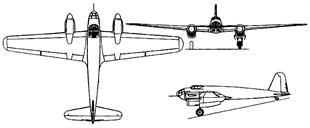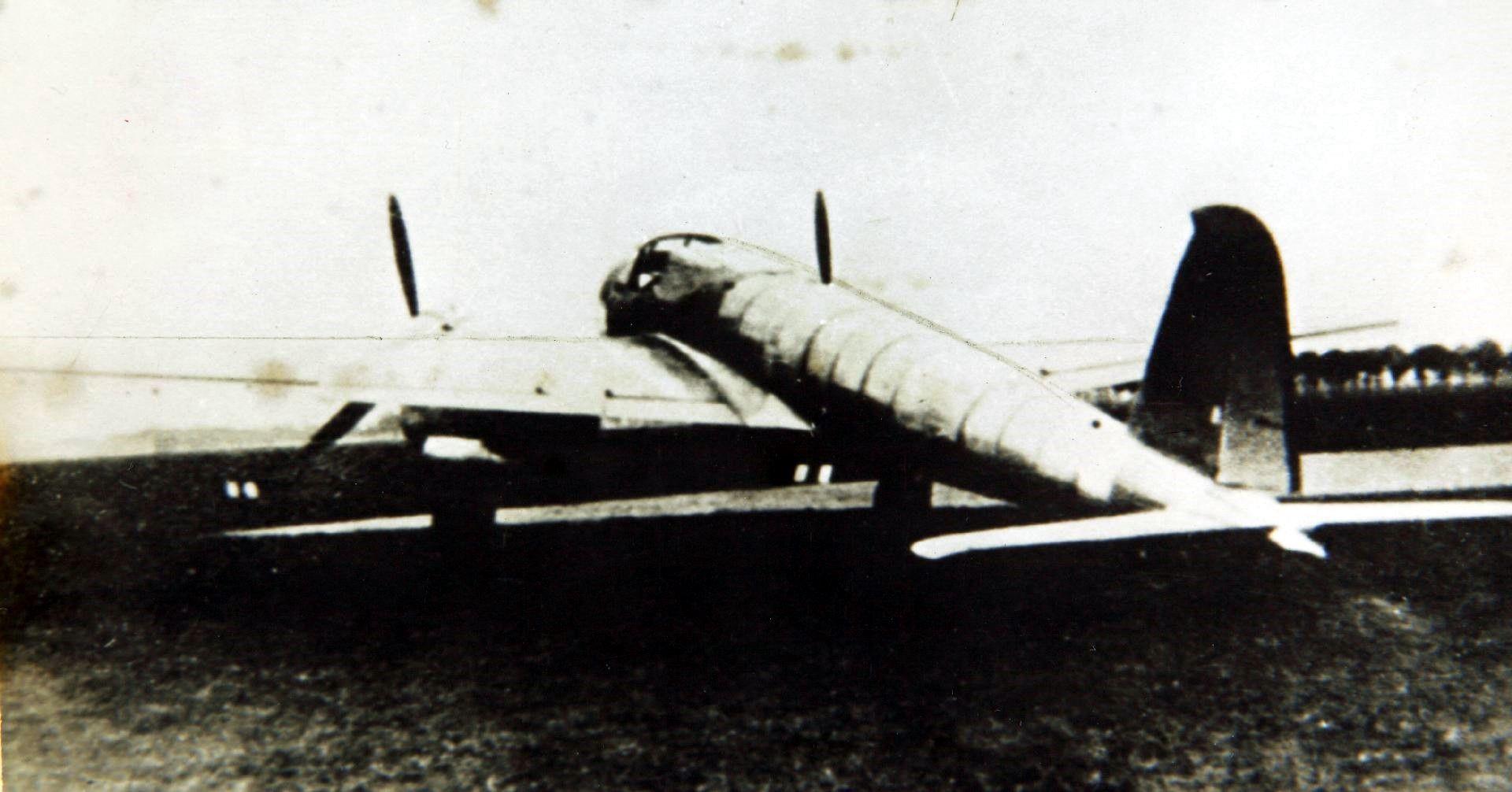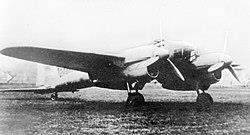| Type |
3-seat medium bomber |
| Engine |
2 Daimler-Benz DB 600 |
| Dimensions |
Length 10,97 m , height 4,38 m , span 17,4 m , wing area 38,6 m2 , |
| Weights |
Empty 5700 kg, loaded 8000 kg , max. take off weight |
| Performance |
Max.. speed 568 km/h, cruising speed 478 km/h , range 1400 km, endurance , service ceiling 9200 m , climb |
| Armament |
Bombload 1500 kg |
| Type |
Werk.Nr |
Registration |
History |
| V1 |
0744 |
|
First flew September 1937 - last known disposition: transferred to E-Stelle Rechlin, 7 September 1939. |
| V2 |
0745 |
|
First flew July 1938, noted to have been fitted with larger fuel tanks - last known disposition: transferred to Rheinmetall-Borsig for weapon tests, 20 September 1939. |
| V3 |
0746 |
|
Never flown, noted to have been fitted with larger fuel tanks and upgraded hydraulic system - last known disposition: transferred to Rechlin-Kommando der Erprobungsstellen (KdE) for weapon tests, 7 September 1939. |



At the beginning of 1935, it was decided to stop work on the "hunter" project and start creating more specialized aircraft. The rejection of the Hs.124 was a serious blow to Nikolaus. Nevertheless, the experience gained in working on this project allowed the Henschel Flygzeugwerke to take part, along with the Focke-Wulf, Junkers and Messerschmitt, in the competition for the so-called "high-speed bomber".
The requirements of the Technical Department specified a three-seat aircraft with defensive armament from one machine gun with 500 rounds, carrying a bomb load of 500-800 kg. The maximum speed - 500 km / h had to be maintained for 30 minutes. Cruising speed was determined at not less than 450 km / h, and the climb time of 7000 m was 25 minutes. The take-off distance with normal weight up to a height of 20 m was set at 750 m, the landing distance with half the load - at 400 m.
Focke-Wulf withdrew from participation in the competition, and Henschel, Junkers and Messerschmitt received an order for three prototype aircraft each - Hs.127, Ju.88 and Bf.162. All three aircraft were to use the latest liquid-cooled Daimler-Benz DB-600 engines. Interestingly, the Henschel and Junkers layouts were very similar. The Hs.127 was a low-wing monocoque fuselage with an oval cross-section and countersunk riveted skin. The wing was two-spar with working skin. The entire trailing edge of the wing was occupied by ailerons and flaps. Oil-damped chassis were produced electrically.
All three crew members were located in the nose. The pilot sat on the left, the radio operator behind and below, and the navigator-scorer in front in the glazed bow. Daimler-Benz DB-600D engines produced 850 hp on takeoff. and worked on three-bladed VDM propellers with variable pitch. Two bomb bays could hold up to 1500 kg of bombs. There were no defensive weapons on the first prototype Hs.127-V1. The first flight took place at the end of 1937. The aircraft was noticeably smaller and lighter than its competitor Ju.88. "Henschel" demonstrated excellent flight data and reached a speed of 565 km / h, but the Technical Department has already selected the Junkers aircraft for serial production, and "Messerschmitt" was recommended to focus on the development of fighters. Shortly after the first flight of the second experimental Hs.127-V2 at the end of spring 1938, the contract with the company was terminated, and the third aircraft was never completed.

